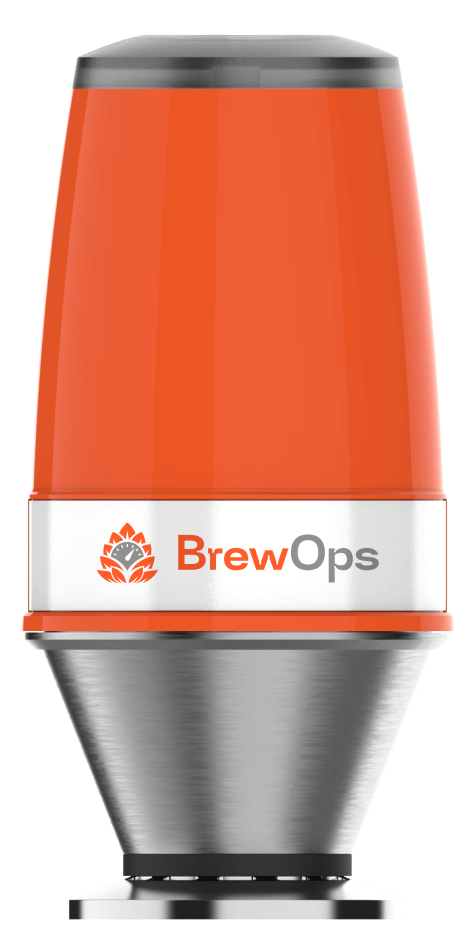In the world of craft brewing, precision and efficiency are vital for producing exceptional beers that delight connoisseurs. One of the key aspects of achieving this excellence is fermentation monitoring. In this blog, we’ll explore the advantages of real-time fermentation monitoring through the measurement of produced carbon dioxide (CO2) and specific gravity, examining how this data-driven approach optimizes craft beer production.
The Essence of Fermentation
The Fermentation Process
Fermentation is where the magic happens. Yeast converts sugars into alcohol and CO2, transforming wort into beer. Monitoring this process in real-time is crucial for crafting the perfect brew. During fermentation, yeast activity generates CO2, which provides valuable insights into the fermentation’s progress.
Specific Gravity
Specific gravity is a vital parameter in brewing. It measures the density of the liquid compared to water and provides insights into the fermentation’s progress and completion. As yeast consumes sugars and produces alcohol, the specific gravity decreases. Real-time specific gravity monitoring allows brewers to track this change, ensuring that fermentation proceeds as planned.
Real-Time Monitoring: A Craft Brewer’s Arsenal
Remote Monitoring
Remote monitoring has revolutionized craft brewery operations. Brewmasters can now keep a watchful eye on their fermentors, even from afar, thanks to real-time data. This remote access offers convenience and peace of mind, allowing brewers to make informed decisions at any time.
CO2 Production: A Key Metric
Measuring CO2 production during fermentation provides valuable information about yeast activity, fermentation efficiency, and the beer’s readiness for packaging. High CO2 production indicates healthy yeast and an active fermentation, while a decline signals fermentation completion. Real-time CO2 monitoring ensures that the beer is not overcarbonated or undercarbonated, enhancing quality control.
Specific Gravity Sensors
Specific gravity sensors enable brewers to track the beer’s density changes in real-time, offering insights into the fermentation curve. As the specific gravity stabilizes, it indicates the end of fermentation. With real-time monitoring, brewers can precisely time the next steps, such as cold crashing and packaging, optimizing brewery efficiency.
Benefits of Real-Time Fermentation Analytics
Time to Package
Craft breweries thrive on efficiency. Real-time data, including CO2 production and specific gravity, reduces the time it takes to determine when a batch is ready for packaging. By closely monitoring these metrics, brewers can avoid unnecessary delays in the production process, getting their beer into the hands of consumers faster while maintaining quality.
Data-Driven Brewing
The era of data-driven decisions has arrived in brewing. Fermentation analytics empower brewers to optimize their processes and produce consistent, high-quality beer. By collecting real-time data and analyzing trends, brewers can fine-tune their recipes and fermentation conditions for each batch, ensuring consistency and customer satisfaction.
Real-Time Monitoring Tools
Automated Fermentors
Craft breweries can now invest in automated fermentors equipped with wireless sensors. These systems offer real-time data and remote control capabilities. Automated fermentors reduce the risk of human error and provide brewers with precise control over fermentation conditions.
Batch Optimization
Real-time gravity and CO2 monitoring play a vital role in batch optimization. Brewers can fine-tune their recipes and processes based on precise data, making adjustments as needed to achieve desired flavor profiles and quality standards. This level of control allows for the production of consistent and exceptional beers.
Remote Control Systems
Remote control systems enable craft brewers to adjust fermentation conditions in real-time, ensuring the desired fermentation curve is achieved. Whether it’s altering temperature settings or adjusting yeast pitching rates, remote control systems give brewers the flexibility to make immediate changes to optimize fermentation outcomes.
Accelerating Time to Package
Real-Time Fermentation Curve Analysis
Analyzing the fermentation curve in real-time allows brewers to accelerate the time to package while maintaining beer quality. By closely monitoring specific gravity and CO2 production trends, brewers can confidently determine when a batch has reached its peak and is ready for the next steps in the brewing process. This efficiency translates into quicker turnaround times and fresher beer for consumers.
Remote Monitoring Solutions
Advantages of Real-Time CO2 Volumetrics
Real-time CO2 volumetric data is a game-changer. It provides brewers with precise insights into fermentation progress and the beer’s readiness for packaging. By knowing the exact CO2 levels, brewers can avoid overcarbonation, which can lead to exploding bottles or cans, and undercarbonation, which can result in flat beer. Real-time CO2 monitoring ensures that each batch meets quality standards.
Remote Monitoring for Craft Breweries
Remote monitoring solutions tailored for craft breweries are readily available, offering ease of implementation and significant benefits. These solutions provide craft brewers with the tools and data they need to consistently produce exceptional beer. Whether it’s monitoring from a smartphone, tablet, or computer, remote monitoring offers convenience and peace of mind.
Conclusion
Real-time fermentation monitoring, enabled by CO2 and specific gravity measurement, is a cornerstone of modern craft brewery operations. Craft brewers who embrace these data-driven approaches gain the ability to produce consistently high-quality beer with efficiency and precision. From accelerating the time to package to achieving fermentation excellence, real-time monitoring is the key to crafting perfection in every batch, ensuring that craft beer enthusiasts continue to savor their beloved brews.



